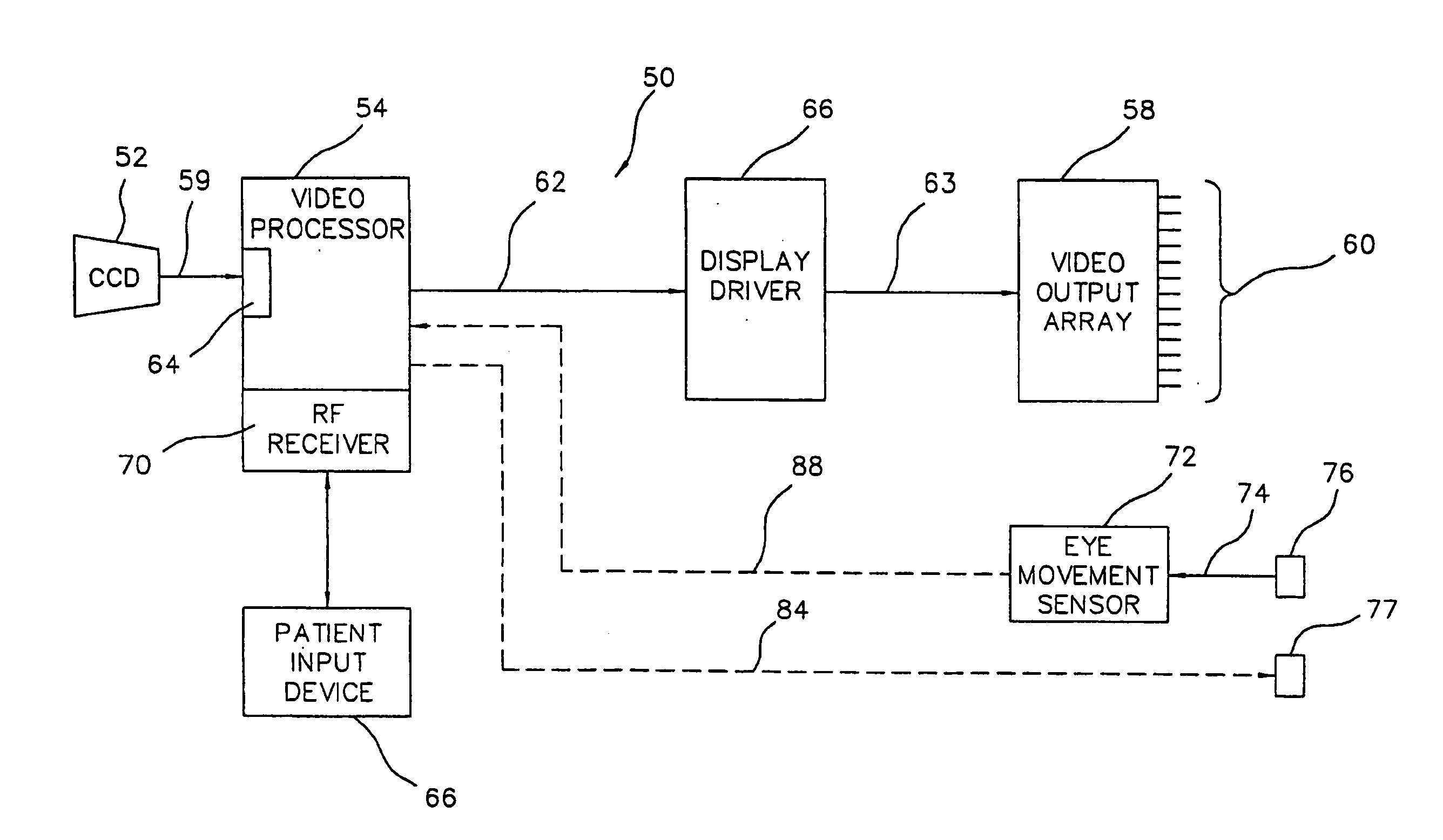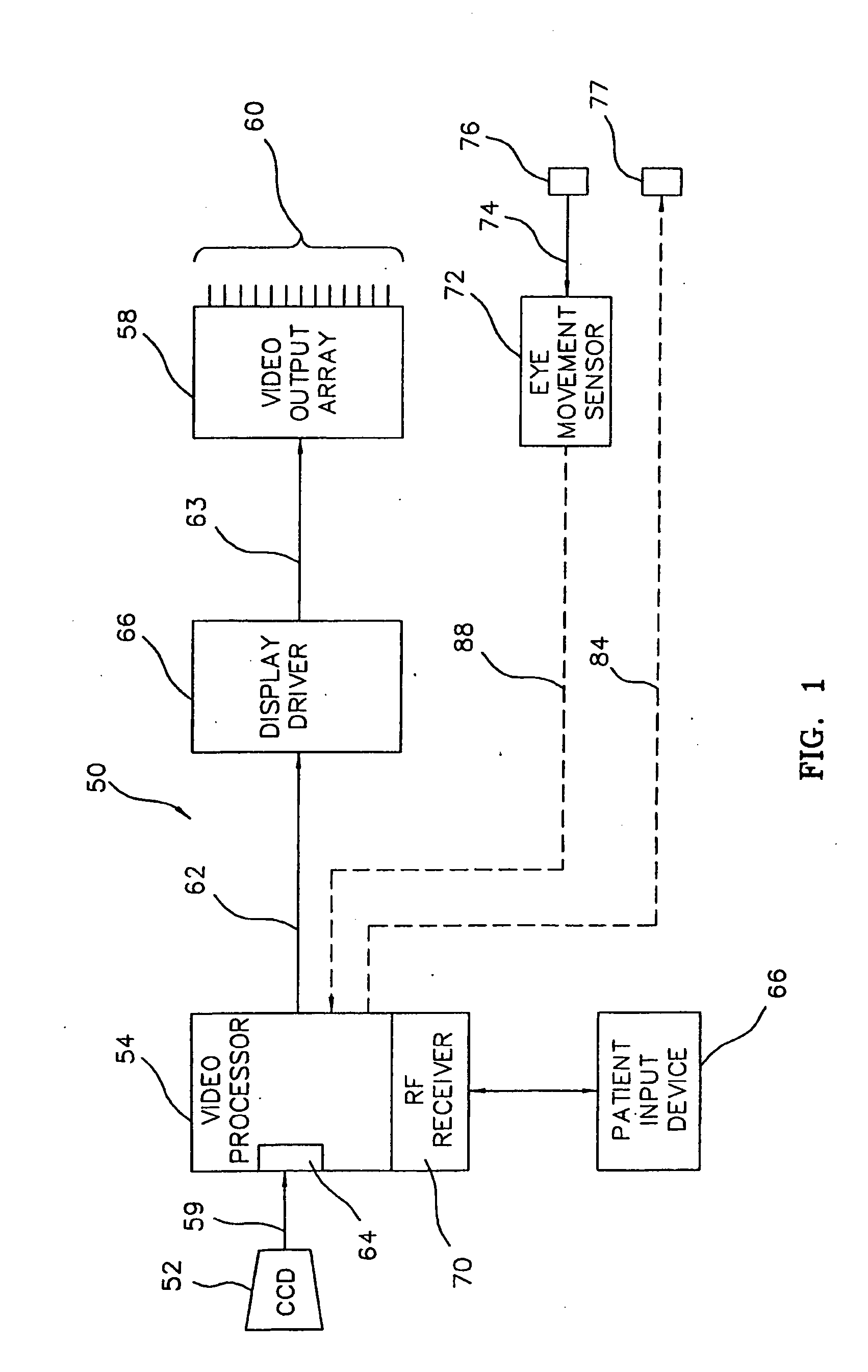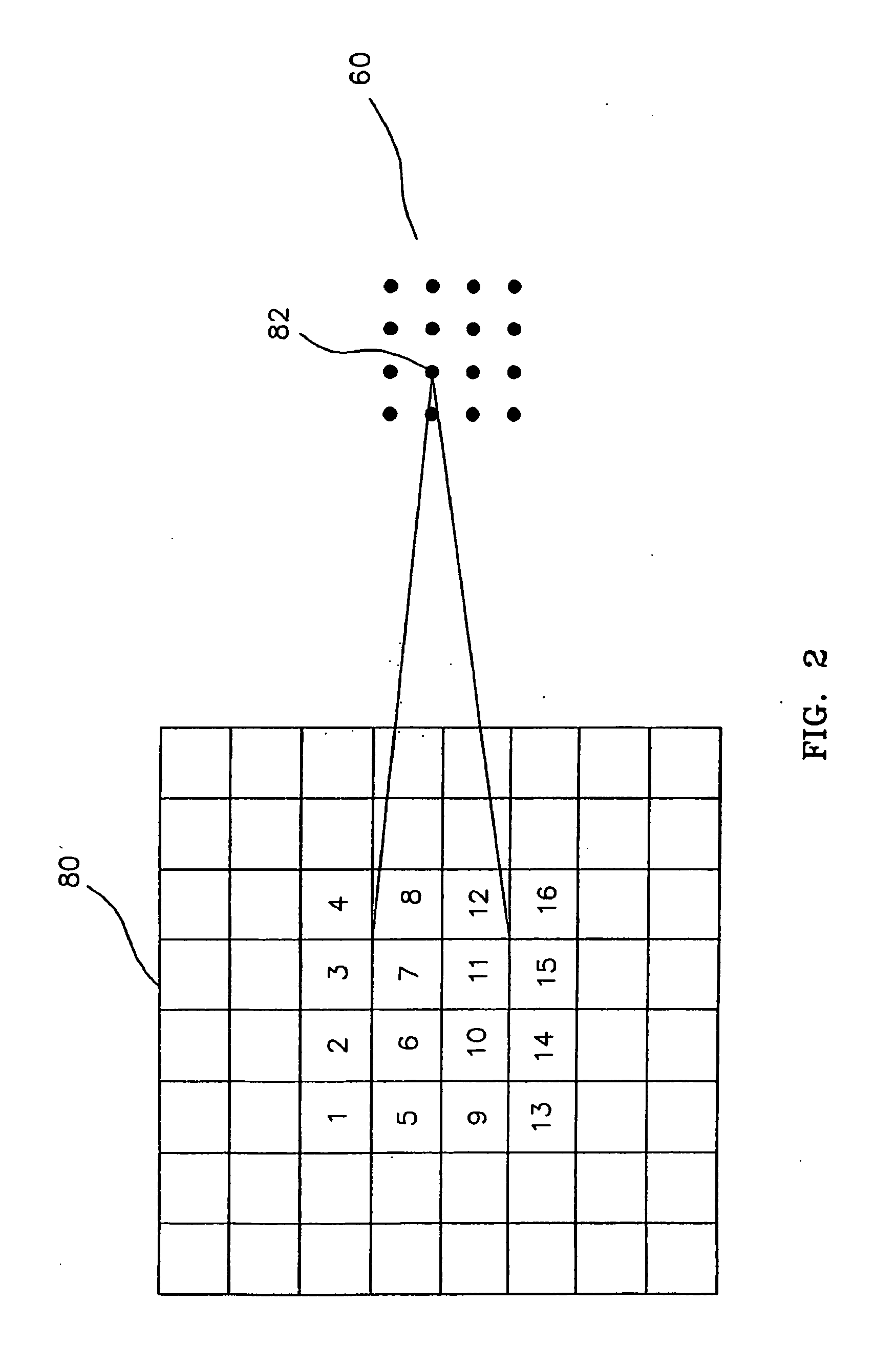Video processing methods for improving visual acuity and/or perceived image resolution
a video processing and resolution technology, applied in electrotherapy, therapy, etc., can solve the problems of limiting the resolution of an image that can be imparted to the patient's brain, and achieve the effects of reducing the density of electrodes, and improving visual acuity
- Summary
- Abstract
- Description
- Claims
- Application Information
AI Technical Summary
Benefits of technology
Problems solved by technology
Method used
Image
Examples
exemplary embodiment 50
[0032] As shown in FIG. 1, an exemplary embodiment 50 of the present invention is primarily comprised of a (1) a “high” resolution video input device 52, (2) a video processor 54, (3) a display driver 56, and (4) a “low” resolution video output array 58. In a preferred embodiment, the “high” resolution input device 52, e.g., a CCD (charge coupled device) camera or equivalent, provides a video signal 59 that is typically of the order of 10,000-1,000,000 or more pixels of resolution. Also, in a preferred embodiment, the “low” resolution output array 58 is a retinal prosthesis comprised of an electrode array 60 that is capable of stimulating neural pathways, e.g., ganglion or bipolar cells at the patient's retina, and thus provides perceivable visual information, i.e., phosphenes, to the patient's brain. Typically, and for the foreseeable future, due to various mechanical, electromechanical, thermal and other technological limitations, the electrode array may be limited to be of the or...
case 1
[0116] Random Jittering
[0117] a(t) and b(t) are random numbers determined from a random distribution with a definable or undefined distribution.
case 2
[0118] Preset Scanning
[0119] a(t) and b(t) have preset values that determine the rate and location of different pixel elements being summed for the ESP.
PUM
 Login to View More
Login to View More Abstract
Description
Claims
Application Information
 Login to View More
Login to View More - R&D
- Intellectual Property
- Life Sciences
- Materials
- Tech Scout
- Unparalleled Data Quality
- Higher Quality Content
- 60% Fewer Hallucinations
Browse by: Latest US Patents, China's latest patents, Technical Efficacy Thesaurus, Application Domain, Technology Topic, Popular Technical Reports.
© 2025 PatSnap. All rights reserved.Legal|Privacy policy|Modern Slavery Act Transparency Statement|Sitemap|About US| Contact US: help@patsnap.com



